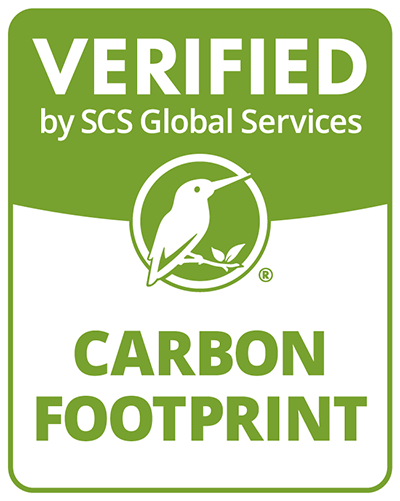

环境认证团队
什么是产品碳足迹?
专家准备的产品碳足迹提供关于你的产品的碳强度的坚实和透明的信息。SCS为您的产品提供基于ISO 14067,PAS 2050和WRI温室气体协议的碳足迹开发。SCS在生命周期评估(LCA)方面有超过30年的经验,可以专业地检查你的产品在整个生命周期的碳强度,包括原材料提取,制造,运输和分配,使用和生命结束时的处置。产品的碳足迹可以传达给你的客户,一旦验证,可以作为追求碳中和认证的基础。你的下游客户需要从他们的供应链中收集信息,以便他们能够制定自己的范围3清单。开发你的产品碳足迹将为你提供所需的信息,以满足客户的要求并管理与你的产品相关的碳。
"科学认证体系公司“ 偶然?
SCS Global Services 拥有超过30年的最高水平的LCA工作经验。我们高度专业化和经验丰富的团队拥有不同的技术背景,在我们的工作中利用最新的软件和数据库,以确保LCA的完整、准确和成本效益。完成你的产品的碳足迹,使你掌握关于你的产品生命周期中的主要热点的重要信息,给你提供你所需要的关键信息,以便随着时间的推移减少碳强度。
- 计划细节
- 效益
资格认证
所有规模和类型的组织在任何地方都可以使用产品碳足迹,以评估你的产品和服务的气候变化影响。
跨越整个生命周期的温室气体核算
评估温室气体水平是基于你的产品或服务的生命周期。产品碳足迹涉及评估所有活动来源的排放,包括:原材料提取和加工、制造、运输和分销、使用和报废。
碳足迹的方法论
我们利用PAS 2050、WRI/WBCSD温室气体议定书或ISO/TS 14067核算方法来确定您的碳足迹。
- WRI- WRI温室气体议定书是一个国际核算工具,被政府和商业领袖广泛用于了解温室气体排放。 截至2011年,《温室气体议定书》包括两个标准,专注于产品和供应链的生命周期温室气体排放。
- PAS 2050- PAS 2050由英国标准协会(BSI)于2008年发布,是全球首个产品碳足迹标准。满足PAS 2050的要求将支持未来对ISO/TS 14067的遵守。
- ISO/TS 14067- ISO最近发布了ISO/TS 14067 "产品的碳足迹",其中包括与产品和服务有关的温室气体排放的量化和交流要求。
根据收集的数据、包括的影响和使用的计算方法,碳足迹方法所捕获的影响水平有所不同。
碳足迹标签
对于希望向客户和利益相关者传达其结果的公司来说,碳足迹标签也是一种选择。不同的碳核算计划已经开发了各种碳足迹标签。希望使用碳标签的企业需要由第三方对其产品评估进行验证。
虽然温室气体排放通常是在组织层面上看待的,但最佳做法是组织将其碳足迹的范围扩大到包括其生产的产品和服务的影响。
测量你的产品的现有生命周期温室气体排放有助于
- 识别 "热点 "和相关的成本/能源节约机会
- 评估替代产品配置、采购和制造方法、原材料选择和供应商选择
- 关于企业责任的报告
- 通过获得管理你的产品碳足迹的指标来满足客户的期望
- 识别供应链中的环境风险
- 为自己在碳约束经济中的竞争定位
- 在道德/新的消费市场提高品牌知名度和企业声誉


